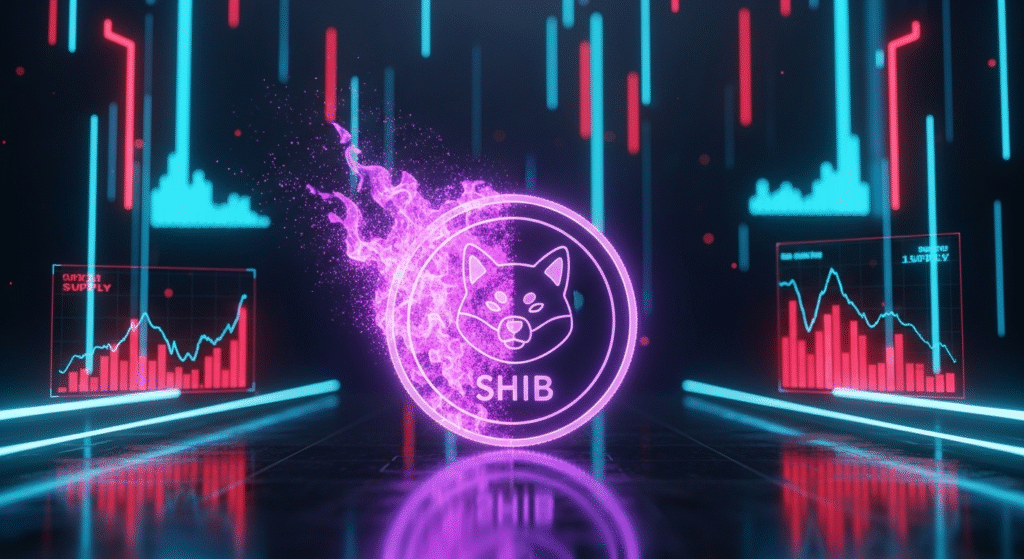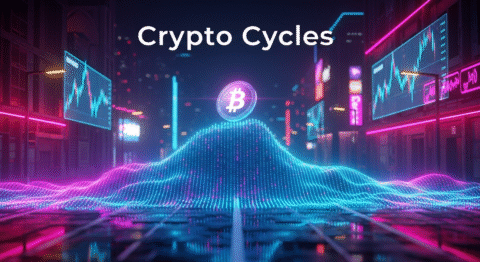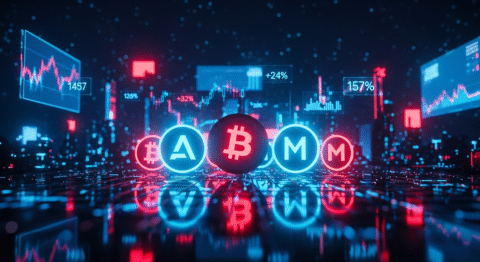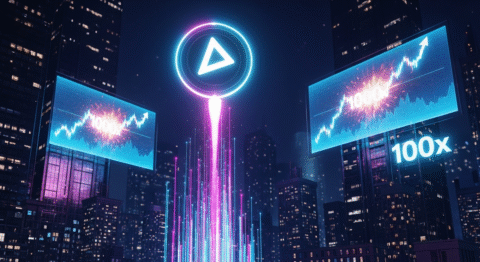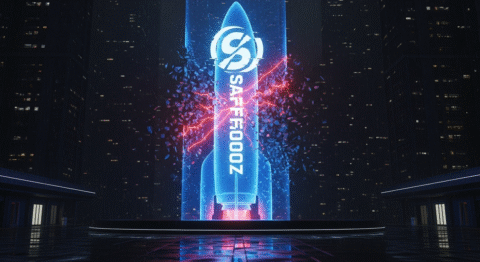Curious how Shiba Burn impacts your crypto? In the ever-evolving landscape of digital assets, understanding the mechanisms that drive value and adoption is crucial, especially when considering the potential of your altcoin portfolio. Have you ever wondered if a seemingly simple action like token burning could have a tangible, positive effect on the value and utility of other cryptocurrencies you hold, particularly those in the fast-paced meme coin sector? Many investors are already seeing the ripple effects, and if you’re holding any altcoins, particularly those with smaller market caps or those looking to gain momentum, the concept of token burning, and its application to projects like Shiba Inu, is something you absolutely need to have on your radar..
Crypto Market Overview
The cryptocurrency market, a dynamic and often volatile arena, is currently characterized by a persistent interest in altcoins and meme coins, alongside the enduring presence of established cryptocurrencies like Bitcoin and Ethereum. We’re observing a trend where utility is increasingly being favored, yet meme coins, fueled by community and virality, continue to capture significant attention and capital. Airdrops, once a primary method for new token distribution, have evolved, with many projects now focusing on more sustainable growth strategies. Key market indicators, such as the Total Crypto Market Cap,
The Core Concept: How Shiba Burn Actually Works
The phenomenon often referred to as Shiba Burn is a fundamental process within the Shiba Inu ecosystem that directly impacts the token’s supply and, by extension, its potential value. At its heart, it’s about strategic removal of tokens from circulation.
What Are Altcoins / Meme Coins / Airdrops?
Let’s demystify the terms we’re using.
- Altcoins: This is a broad term encompassing all cryptocurrencies other than Bitcoin. They emerged as alternatives to Bitcoin, often aiming to improve upon its features or offer entirely new functionalities. Examples range from Ethereum, which introduced smart contracts, to Ripple (XRP) focused on cross-border payments, and countless others with diverse use cases.
- Meme Coins: These are cryptocurrencies that originated from internet memes or jokes. While initially lacking serious utility, many have cultivated strong online communities and developed into more substantial projects. Shiba Inu is a prime example, evolving from its meme origins to a vast ecosystem with decentralized exchanges (ShibaSwap), NFTs, and an upcoming metaverse. Dogecoin is another well-known meme coin.
- Airdrops: In the crypto space, an airdrop is a promotional strategy where a cryptocurrency project distributes its tokens for free to a community of holders, usually distributed to holders of another cryptocurrency or to users who perform certain tasks. This is often done to raise awareness, attract new users, and bootstrap demand for a new token.
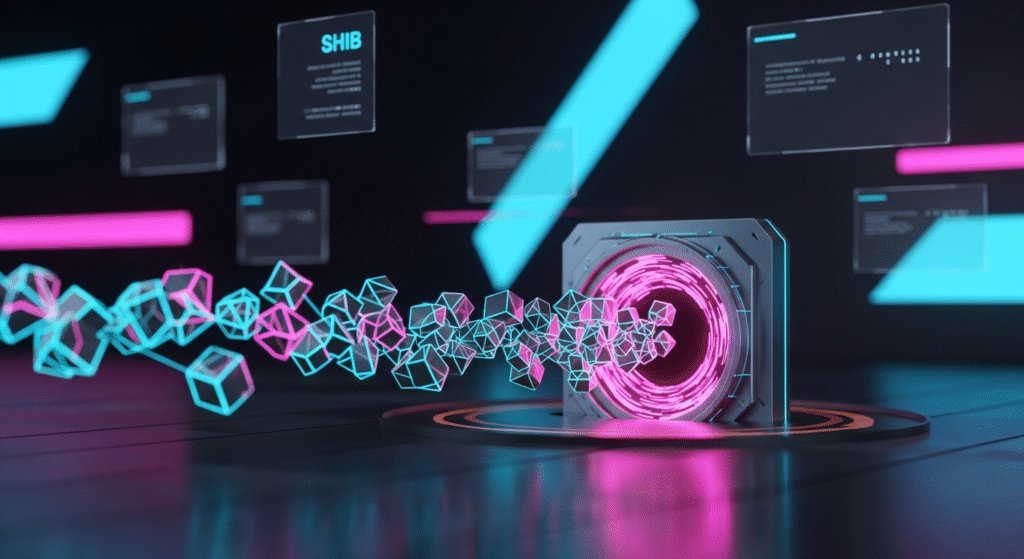
Key Components & Technologies
The underlying technology for most cryptocurrencies, including Shiba Inu and its associated burns, is blockchain technology. Specifically for Shiba Inu, it operates on the Ethereum blockchain as an ERC-20 token, benefiting from Ethereum’s robust security, decentralized infrastructure, and smart contract capabilities.
The Shiba Burn mechanisms themselves are implemented through smart contracts. These are self-executing contracts with the terms of the agreement directly written into code. They run on the blockchain and automatically execute actions when predefined conditions are met.
For Shiba Inu burn, this can manifest in several ways:
- Transaction Fees: A portion of transaction fees on certain platform interactions within the Shiba Inu ecosystem might be directed to a burn address.
- Specific Burn Programs: The community and developers can initiate dedicated burn events, where a predefined amount of SHIB is sent to an inaccessible wallet, effectively removing it from circulation permanently.
- Ecosystem Utility: As the Shiba Inu ecosystem expands (e.g., with Shibarium, their Layer-2 scaling solution, or the upcoming Shib the Metaverse), new mechanisms can be introduced to burn SHIB tokens as they are utilized within these platforms. For instance, paying for services or minting NFTs with SHIB could trigger automatic burns.
The core idea is that by sending tokens to a “burn address” – an address that has no associated private key and is therefore inaccessible – the tokens are permanently removed from the circulating supply. This creates scarcity.
The Data-Driven Perspective
Understanding the impact of any crypto strategy hinges on data. Let’s examine how token burning, and specifically the Shiba Inu burn, plays out in terms of quantifiable results.
Market Data & Trends
The impact of burning mechanisms on token value is a subject of ongoing research and market observation. While no single burn event guarantees a price increase, consistent and significant burning efforts can, over time, contribute to a more favorable supply-demand dynamic.
For a project like Shiba Inu, which started with an astronomical initial supply (1 quadrillion tokens), the concept of burning is critical for creating scarcity and potentially driving up the price per token. Data shows that various community-led and developer-initiated burn events have collectively removed billions, and even trillions, of SHIB tokens from circulation.
Illustrative Example (Hypothetical but representative of trends):
- Initial Supply: 1,000,000,000,000,000 SHIB
- Tokens Burned (Cumulative): 500,000,000,000,000 SHIB
- Current Circulating Supply: 500,000,000,000,000 SHIB
- Impact on Scarcity: The circulating supply has been halved, meaning each remaining token represents a larger proportion of the total available tokens.
While direct correlation between specific burn amounts and immediate price pumps is rare and often influenced by broader market sentiment or news, the long-term trend favors tokens with decreasing supply. Altcoins and meme coins that implement effective burning strategies often see increased holder interest due to the narrative of increasing scarcity and potential for future price appreciation. Analyzing on-chain data for the number of tokens burned, the rate of burning, and the remaining circulating supply provides a clear, data-backed view of this scarcity mechanism at play.
Tokenomics & Market Health
Tokenomics refers to the economic design of a cryptocurrency, including its supply, distribution, and utility. For meme coins particularly, robust tokenomics are vital for long-term survival beyond initial hype.
Supply:
The initial supply of Shiba Inu was famously large, making scarcity an immediate concern. The Shiba Inu burn initiative directly addresses this by systematically reducing the token count. A decreasing supply, when demand remains stable or increases, generally leads to upward price pressure.
Demand:
Demand for SHIB is driven by several factors:
- Community Engagement: The large and active Shiba Inu community plays a crucial role in promotion and adoption.
- Ecosystem Development: The launch of ShibaSwap, NFTs, and the upcoming Shibarium Layer-2 solution aim to create real-world utility, increasing demand for SHIB as a medium of exchange and for accessing services.
- Speculative Interest: Like many altcoins, SHIB attracts speculative investors looking for significant returns, especially during bull market phases.
- Burning Narrative: The very act of burning tokens makes SHIB more attractive to investors who believe in scarcity-driven value.
Market Health:
A healthy tokenomic model, supported by consistent burning, contributes to market health by:
- Reducing Inflationary Pressure: By decreasing the supply, burning counteracts any potential inflationary pressures from new token generation or large holdings being unlocked.
- Creating Value: Scarcity is a fundamental economic principle that can drive value. When fewer tokens exist, each remaining token becomes inherently more valuable, assuming demand persists.
- Signaling Commitment: Consistent burning signals a commitment from project developers and the community to manage supply effectively and foster long-term growth, boosting investor confidence.
When you consider your altcoin portfolio, looking for projects with well-defined tokenomics that include deflationary mechanisms like burning is a smart. The Shiba Inu burn is a prominent case study in how an initially supply-heavy token can work towards creating scarcity.
Risks, Challenges & Competition
While burning mechanisms offer enticing benefits, it’s crucial to approach them with a clear understanding of the associated risks and the competitive landscape.
Risks of Altcoins and Meme Coins
- Volatility: Altcoins and meme coins are notoriously more volatile than established cryptocurrencies like Bitcoin. Their prices can experience dramatic swings based on social media trends, celebrity endorsements, or minor news events.
- Security Vulnerabilities: While many rely on established blockchains, some smaller altcoins might have unique smart contract vulnerabilities or be susceptible to network attacks if their security protocols are not as robust.
- Regulatory Uncertainty: The regulatory landscape for cryptocurrencies is still evolving globally. Altcoins, especially those with novel functionalities or those perceived as investment schemes, can face increased scrutiny and potential regulatory action, which can impact their value and accessibility.
- Market Manipulation: Due to lower liquidity and smaller market caps, altcoins and meme coins can be more susceptible to “pump and dump” schemes, where coordinated groups artificially inflate the price before selling off their holdings, leaving other investors with losses.
- Lack of Real Utility: Many meme coins, despite evolving, still struggle to establish genuine, long-term utility that drives consistent demand beyond speculation. If the community interest wanes or the project fails to deliver on its roadmap, the token’s value can plummet.
How Does Shiba Burn Stack Up Against Competitors?
When we talk about Shiba Burn, it’s important to see it in the context of other projects employing similar or different scarcity mechanisms.
| Feature/Project | Shiba Inu (SHIB) | Other Meme Coins (e.g., Dogecoin) | Utility Tokens (e.g., Chainlink, Filecoin) | Promising Altcoins with Burning Mechanisms (e.g., Safemoon, Evergrow) |
|---|---|---|---|---|
| Primary Mechanism | Burning to reduce supply; Ecosystem utility (ShibaSwap, Shibarium) to drive demand. | Primarily community-driven; Adoption for payments; Limited deflationary mechanisms (historically). | Focused on providing services or powering decentralized networks; Supply often managed via inflation/emission schedules. | Token reflections (rewards to holders), transaction taxes that fund burns or buybacks, utility within their ecosystem. |
| Supply Strategy | Massive initial supply, significant ongoing burning efforts to create scarcity. | Large, but generally fixed or predictable inflation; less emphasis on controlled supply reduction. | Varies, often with a cap or controlled inflation tied to network usage or staking rewards. | Often start with large supplies but implement taxes for burning, aiming for deflationary pressure. |
| Utility & Ecosystem | Developing a comprehensive ecosystem: DEX (ShibaSwap), NFTs, Metaverse, Layer-2 (Shibarium). | Primarily a medium of exchange, payment adoption, strong community. | Directly support blockchain infrastructure, data services, computation, storage, etc. | Aim to build DeFi platforms, NFT marketplaces, gaming, or provide transaction fee reductions. |
| Community Focus | Extremely strong, active, and organized global community driving adoption and initiatives like burn events. | Very strong, organic community; often seen as grassroots. | Community is important but often focused on developers and validators within the specific network. | Strong community presence vital for driving up token value through active participation and marketing. |
| Risk Profile | High due to volatility and ongoing development risk, but addressing scarcity. | High volatility; reliance on continued meme appeal. | Varies significantly, generally lower volatility than meme coins but still subject to market shifts; technology risk can be present. | Very high due to speculative nature and often unproven long-term utility; potential for rug pulls in some smaller projects. |
| Data-Driven Burn | Transparent tracking of SHIB burned; impact on supply is quantifiable. | Minimal or no formal burning mechanisms. | Not applicable; these tokens function differently and don’t rely on burning for value like meme coins. | Often have publicly visible burn wallets and dashboards to track burnt tokens. |
This comparison highlights that while many altcoins and meme coins compete for investor attention, projects like Shiba Inu are actively trying to differentiate themselves with utility and concrete scarcity mechanisms like Shiba Burn. The success of these strategies is measured by their ability to foster sustained demand and create a positive feedback loop for token value.
The Future Outlook
The trajectory of cryptocurrencies, especially altcoins and meme coins, is intrinsically linked to innovation, market sentiment, and evolving investor behaviors.
What’s Next for Altcoins / Meme Coins / Airdrops?
The future for these segments of the crypto market holds both promise and uncertainty:
- Increased Focus on Utility for Meme Coins: The trend is moving beyond pure meme status. Projects that can demonstrate tangible use cases, such as payment integration, DeFi participation, or metaverse interoperability, are likely to see more sustained growth. The Shiba Inu burn is part of a larger strategy to imbue SHIB with utility and long-term value, moving it beyond its meme origins.
- Layer-2 Solutions and Scalability: The ongoing development and adoption of Layer-2 solutions like Shibarium are crucial for altcoins. These solutions aim to reduce transaction fees and increase transaction speeds, making cryptocurrencies more practical for everyday use and for implementing burning mechanisms efficiently.
- Regulatory Clarity: As governments worldwide grapple with crypto regulation, the eventual clarity will likely lead to greater institutional adoption but might also pose challenges for some projects that do not meet compliance standards. Projects with clear tokenomics and transparent operations will be better positioned.
- Sophistication in Burning Mechanisms: We can expect to see more innovative burning strategies. Beyond simple token destruction, dynamic burning tied to network activity, a portion of transaction fees, or staking rewards will become more common. This offers a more sustainable way to manage supply and reward holders.
- Maturation of Airdrop Strategies: While direct airdrops for simple engagement may decrease, we might see more strategic token distributions tied to participation in decentralized governance, rewarding early adoption of new platforms, or incentives for liquidity provision.
For your altcoin portfolio, staying abreast of these trends is paramount. Understanding how projects like Shiba Inu are evolving their Shiba Burn initiatives and ecosystem development will provide valuable insights into potentially rewarding investments. The key will be to identify projects that are not just driven by hype but by a solid foundation of technology, utility, and sound tokenomics.
Conclusion
Navigating the crypto market requires a keen eye for innovation and a data-driven approach. We’ve explored how mechanisms like Shiba Burn can significantly impact your altcoin portfolio by creating scarcity and supporting a project’s long-term viability. The strategic removal of tokens from circulation, as seen with the Shiba Inu burn, is a powerful tool for enhancing a cryptocurrency’s value proposition.
The current market snapshot shows a growing appreciation for projects with robust tokenomics and clear utility. By understanding the core concepts of altcoins, meme coins, and burning mechanisms, and by analyzing market data and tokenomics, you can make more informed investment decisions. While risks are inherent in the altcoin space, projects that implement effective scarcity strategies alongside ecosystem development, like Shiba Inu, are well-positioned for potential growth.
The future outlook suggests a market that rewards utility, innovation, and sustainable tokenomics. Keep a close eye on the evolution of burning mechanisms and ecosystem development within your altcoin holdings.
What are your thoughts on token burning and its impact on altcoin portfolios? Do you hold any cryptocurrencies that utilize burning mechanisms? Share your experiences and insights in the comments below! Interested in learning more about crypto strategies? Explore our related posts on altcoin diversification and identifying promising meme coins. Don’t forget to subscribe for the latest market insights and crypto analysis!
FAQs
Q1: What is the primary goal of the Shiba Inu burn?
The primary goal of the Shiba Inu burn is to reduce the massive circulating supply of SHIB tokens, thereby creating scarcity and potentially increasing the value of the remaining tokens. It also aims to support the long-term health and growth of the Shiba Inu ecosystem.
Q2: How does burning tokens affect the price of an altcoin?
Burning tokens reduces the total supply. If demand for the token remains constant or increases, the reduction in supply can lead to an increase in price. This is based on the fundamental economic principle that scarcity can drive value.
Q3: Are there risks associated with investing in altcoins or meme coins that burn tokens?
Yes, there are significant risks. These include high volatility, potential for market manipulation, regulatory uncertainty, and the possibility that the project may not achieve its intended utility or community support, regardless of burning efforts. Burning is a helpful mechanism, but not a guarantee of price appreciation.
Q4: How can I track the number of Shiba Inu tokens that have been burned?
You can typically track Shiba Inu burn data through various cryptocurrency tracking websites and dedicated Shiba Inu burn dashboards. These platforms often provide real-time or regularly updated statistics on the total tokens burned, the rate of burning, and the current circulating supply.
Q5: Should I invest in altcoins solely based on their token burning mechanisms?
No, investing solely based on token burning mechanisms is not advisable. While burning is a positive factor for scarcity, a sound investment decision should also consider the project’s utility, development team, community strength, tokenomics, and overall market conditions. Burning should be viewed as one component of a larger investment thesis.


